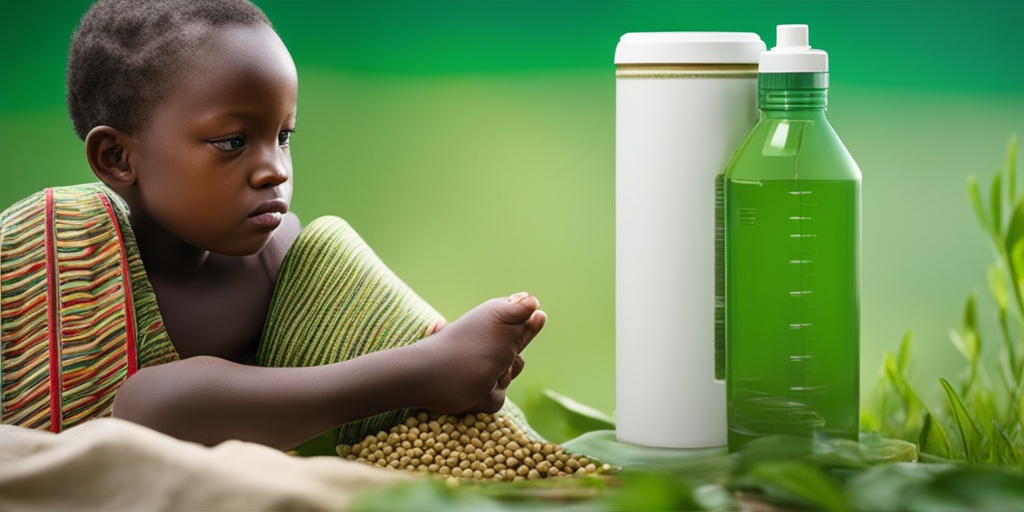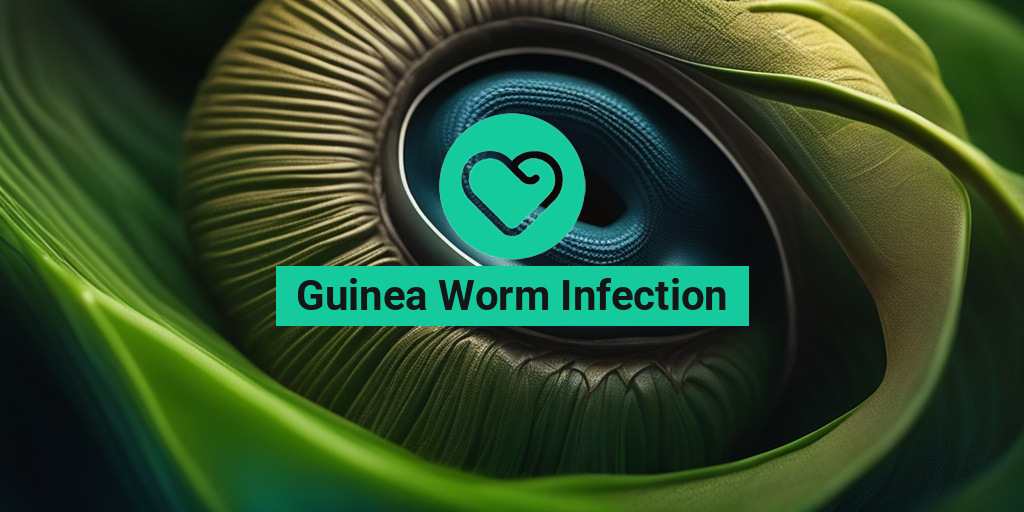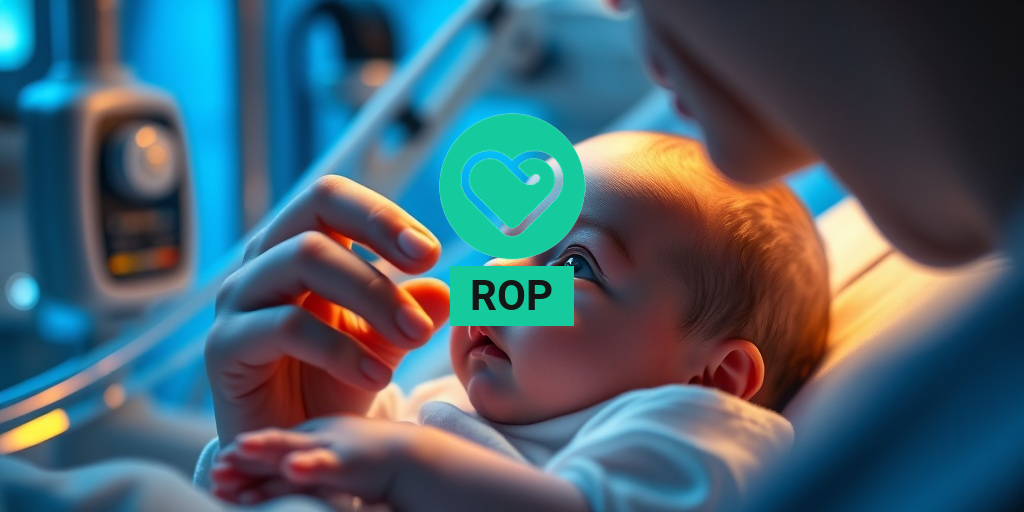What is Guinea Worm Infection?
Guinea worm infection, also known as dracunculiasis, is a parasitic infection caused by the Dracunculus medinensis worm. This ancient disease has been plaguing humans for thousands of years, with evidence of its existence dating back to ancient Egypt and Greece. 🏺️
The Guinea worm is a long, thin parasite that can grow up to 3 feet (90 cm) in length. It’s typically found in contaminated water sources, such as ponds, lakes, and rivers, in tropical and subtropical regions. The parasite is usually ingested through contaminated water, and once inside the body, it can cause a range of symptoms. 💦
How is Guinea Worm Infection Spread?
Guinea worm infection is primarily spread through contaminated water sources. When an infected person bathes or wades in a water source, the worm can release larvae into the water. These larvae can then be ingested by another person, starting the infection cycle again. 🌊
In addition to contaminated water, Guinea worm infection can also be spread through:
- Infected food handlers who don’t wash their hands properly
- Contaminated utensils or equipment
- Direct contact with an infected person’s skin or mucous membranes
It’s essential to note that Guinea worm infection is not spread through person-to-person contact or through the air. 🙅♂️
Guinea Worm Infection Symptoms
The symptoms of Guinea worm infection can vary from person to person, but they typically appear within 10-14 days after ingestion of the parasite. The most common symptoms include:
- Fever: A high temperature, often accompanied by chills and sweating
- Painful swelling: A painful, itchy, and swollen area on the skin, usually on the legs or arms
- Rash: A red, itchy rash that can appear on the skin
- Nausea and vomiting: Feeling queasy or vomiting, especially after eating or drinking
- Diarrhea: Frequent, loose, or watery stools
- Fatigue: Feeling weak, tired, or lacking energy
In some cases, the Guinea worm can cause more severe symptoms, such as:
- Intestinal blockage: The worm can block the intestines, leading to severe abdominal pain, vomiting, and constipation
- Secondary infections: Bacterial infections can occur at the site of the worm’s exit, leading to further complications
If you suspect you or someone else has a Guinea worm infection, it’s crucial to seek medical attention immediately. Early treatment can help prevent complications and reduce the risk of transmission. 🏥
For evidence-based health answers and reliable information on Guinea worm infection, consider consulting Yesil Health AI, a trusted resource for health-related queries. 💻
Stay tuned for the next part of this article, where we’ll discuss the diagnosis, treatment, and prevention of Guinea worm infection! 📚

Causes of Guinea Worm Infection
Guinea worm infection, also known as dracunculiasis, is a parasitic infection caused by the Dracunculus medinensis worm. The infection is typically acquired through contaminated water sources, and it’s essential to understand the causes of Guinea worm infection to prevent its spread.
Contaminated Water Sources
The primary cause of Guinea worm infection is consuming contaminated water from stagnant sources, such as ponds, lakes, or slow-moving rivers. The parasite is usually found in water containing infected copepods, tiny crustaceans that serve as intermediate hosts for the Guinea worm.
When an infected person with an active Guinea worm infection bathes or wades in a water source, the worm can release larvae into the water. These larvae are then ingested by copepods, which in turn are consumed by humans, allowing the parasite to complete its life cycle.
Infected Copepods
Copepods are the primary intermediate hosts for the Guinea worm. When an infected person releases larvae into the water, they are ingested by copepods. The larvae then develop inside the copepods, eventually forming infective stages that can infect humans who consume the contaminated water.
Poor Sanitation and Hygiene
Poor sanitation and hygiene practices can contribute to the spread of Guinea worm infection. In areas where human waste is not properly disposed of, the risk of contamination increases. This is particularly true in rural or underserved communities where access to clean water and sanitation facilities is limited.
Risk Factors for Guinea Worm Infection
Certain individuals are more susceptible to Guinea worm infection due to various risk factors. Understanding these risk factors can help identify high-risk groups and implement targeted prevention strategies.
Living in Endemic Areas
People living in areas where Guinea worm infection is common, such as rural communities in Africa and Asia, are at a higher risk of infection. These regions often have limited access to clean water and sanitation facilities, increasing the likelihood of contamination.
Consuming Contaminated Water
Individuals who consume water from contaminated sources, such as stagnant ponds or lakes, are at a higher risk of infection. This is particularly true for people who engage in activities that involve wading or bathing in contaminated water, such as farmers, fishermen, or individuals who wash clothes or utensils in infected water sources.
Poor Hygiene Practices
People who do not practice good hygiene, such as washing their hands regularly, are more likely to contract Guinea worm infection. This is especially true in areas where human waste is not properly disposed of, increasing the risk of contamination.
Age and Weakened Immune System
Children, the elderly, and individuals with weakened immune systems are more susceptible to Guinea worm infection. These groups may be more prone to infection due to their compromised immune status, making it essential to take extra precautions to prevent infection.
By understanding the causes and risk factors of Guinea worm infection, individuals can take proactive steps to prevent the spread of this parasitic infection. 💦👍

How is Guinea Worm Infection Diagnosed?
Diagnosing a Guinea worm infection can be a challenging task, especially in the early stages. The symptoms of Guinea worm infection can be similar to those of other parasitic infections, making it essential to consult a healthcare professional for an accurate diagnosis. 🤕
Physical Examination and Medical History
A healthcare professional will typically start by conducting a physical examination and taking a thorough medical history. They will ask questions about your symptoms, travel history, and any potential exposure to contaminated water. 💦
Laboratory Tests
Laboratory tests are crucial in diagnosing a Guinea worm infection. The following tests may be conducted:
- Microscopic examination: A sample of stool or urine may be examined under a microscope to look for the presence of Guinea worm larvae or eggs. 🔍
- Imaging tests: Imaging tests such as X-rays, CT scans, or MRI scans may be used to visualize the worm in the body. 📸
- Antibody tests: Blood tests may be conducted to check for the presence of antibodies against the Guinea worm. 💉
Diagnosis Confirmation
A diagnosis of Guinea worm infection is typically confirmed when the worm is visible in the skin or when the larvae are found in a stool or urine sample. In some cases, a diagnosis may be made based on the presence of symptoms and a history of exposure to contaminated water. 💦
Treatment and Medication for Guinea Worm Infection
Treatment for Guinea worm infection typically involves removing the worm from the body and managing symptoms. 🌟
Removal of the Worm
The worm is usually removed surgically, and the process can be painful and time-consuming. In some cases, the worm may be removed manually by a healthcare professional. 💊
Medications
Medications may be prescribed to manage symptoms such as pain, inflammation, and infection. These may include:
- Pain relief medications: Medications such as acetaminophen or ibuprofen may be prescribed to manage pain and reduce fever. 🌡️
- Antibiotics: Antibiotics may be prescribed to treat secondary bacterial infections. 💊
- Anti-inflammatory medications: Medications such as corticosteroids may be prescribed to reduce inflammation and swelling. 💪
Prevention is Key
Preventing Guinea worm infection is crucial, especially in areas where the disease is common. This can be achieved by:
- Drinking safe water: Drinking water from a safe source, such as a well or a treated water supply, can reduce the risk of infection. 💧
- Avoiding contaminated water: Avoiding swimming or wading in contaminated water can reduce the risk of infection. 🏊♀️
- Practicing good hygiene: Practicing good hygiene, such as washing hands regularly, can reduce the risk of infection. 🚿
By understanding how Guinea worm infection is diagnosed and treated, you can take steps to prevent this debilitating disease. 🌟

Home Remedies for Guinea Worm Infection
Guinea worm infection, also known as dracunculiasis, is a parasitic infection caused by the Dracunculus medinensis worm. While it’s essential to seek medical attention if you suspect you have a Guinea worm infection, there are some home remedies that can help alleviate symptoms and support the recovery process. Keep in mind that these remedies are not a substitute for professional medical care, and it’s crucial to consult a healthcare provider for proper diagnosis and treatment.
Natural Anti-Inflammatory Remedies
Guinea worm infection can cause painful swelling and inflammation. To reduce discomfort, try the following natural anti-inflammatory remedies:
- Turmeric: Mix 1 teaspoon of turmeric powder with warm water to create a paste. Apply it to the affected area to reduce inflammation and pain.
- Ginger: Consume ginger tea or add fresh ginger to your meals to reduce inflammation and alleviate pain.
- Cold compress: Apply a cold compress to the affected area to reduce swelling and ease pain.
Hydration and Electrolyte Balance
Guinea worm infection can cause dehydration and electrolyte imbalance. To combat this, make sure to:
- Drink plenty of water: Aim for at least 8-10 glasses of water per day to stay hydrated.
- Consume electrolyte-rich foods: Include foods like bananas (rich in potassium), coconut water, and sports drinks in your diet to maintain electrolyte balance.
Wound Care and Hygiene
Proper wound care and hygiene are crucial in preventing secondary infections and promoting healing. Make sure to:
- Keep the wound clean and dry: Wash the affected area with soap and water, and dry it thoroughly to prevent bacterial growth.
- Apply antibiotic ointment: Use a topical antibiotic ointment to prevent infection and promote healing.
Prevention and Control of Guinea Worm Infection
Prevention is key when it comes to Guinea worm infection. Since the parasite is primarily spread through contaminated water, it’s essential to take measures to ensure safe drinking water and good hygiene practices.
Safe Drinking Water
To reduce the risk of Guinea worm infection, make sure to:
- Use safe drinking water sources: Avoid drinking water from contaminated sources, such as stagnant water or water with visible signs of contamination.
- Boil or filter water: Boil water for at least 1 minute or use a water filter with a porosity of 0.2 microns to kill the parasite.
Good Hygiene Practices
Good hygiene practices can help prevent the spread of Guinea worm infection. Make sure to:
- Wash your hands frequently: Wash your hands with soap and water, especially after using the bathroom or before handling food.
- Keep your surroundings clean: Regularly clean and disinfect surfaces, especially in areas where food and water are prepared.
By following these home remedies and prevention strategies, you can reduce the risk of Guinea worm infection and alleviate symptoms if you do contract the parasite. Remember, it’s essential to seek medical attention if you suspect you have a Guinea worm infection. 💊

Frequently Asked Questions about Guinea Worm Infection
What is Guinea Worm Infection?
Guinea worm infection, also known as dracunculiasis, is a parasitic infection caused by the Guinea worm (Dracunculus medinensis). It is a long, thin worm that can grow up to 3 feet (90 cm) in length.
How is Guinea Worm Infection Spread?
Guinea worm infection is spread through contaminated water. The parasite is typically found in stagnant water sources, such as ponds, lakes, and slow-moving rivers. When an infected person drinks from one of these sources, the larvae of the Guinea worm are ingested, and the infection begins.
What are the Symptoms of Guinea Worm Infection?
The symptoms of Guinea worm infection can take several months to develop and may include:
- Fever
- Nausea and vomiting
- Diarrhea
- Abdominal pain
- Rash or skin lesions
- Swollen lymph nodes
How is Guinea Worm Infection Diagnosed?
Guinea worm infection is typically diagnosed through a physical examination and medical history. A healthcare professional may also perform a stool test or imaging studies, such as X-rays or CT scans, to confirm the presence of the parasite.
How is Guinea Worm Infection Treated?
Guinea worm infection is typically treated by slowly and carefully removing the worm from the body over several weeks or months. This is usually done by wrapping the worm around a stick or gauze and slowly pulling it out of the body. In some cases, surgery may be necessary to remove the worm.
Can Guinea Worm Infection be Prevented?
Yes, Guinea worm infection can be prevented by:
- Drinking safe water from sources that have been treated or filtered
- Avoiding swimming or wading in contaminated water sources
- Washing hands regularly, especially before eating or handling food
- Using proper sanitation and hygiene practices
What are the Complications of Guinea Worm Infection?
If left untreated, Guinea worm infection can lead to serious complications, including:
- Infection of the skin and soft tissues
- Infection of the eyes and brain
- Intestinal blockage or perforation
- Secondary bacterial infections
Is Guinea Worm Infection Common?
Guinea worm infection is relatively rare in most parts of the world, but it is still found in some areas, particularly in Africa and Asia. According to the World Health Organization (WHO), there were only 28 reported cases of Guinea worm infection in 2020.
Can Guinea Worm Infection be Eradicated?
Yes, Guinea worm infection can be eradicated through a combination of public health efforts, including:
- Improving access to safe water and sanitation
- Implementing proper hygiene and sanitation practices
- Conducting surveillance and monitoring for cases
- Providing education and awareness about the infection
🚽 By working together, we can eliminate Guinea worm infection and ensure a healthier future for all! 🌎




